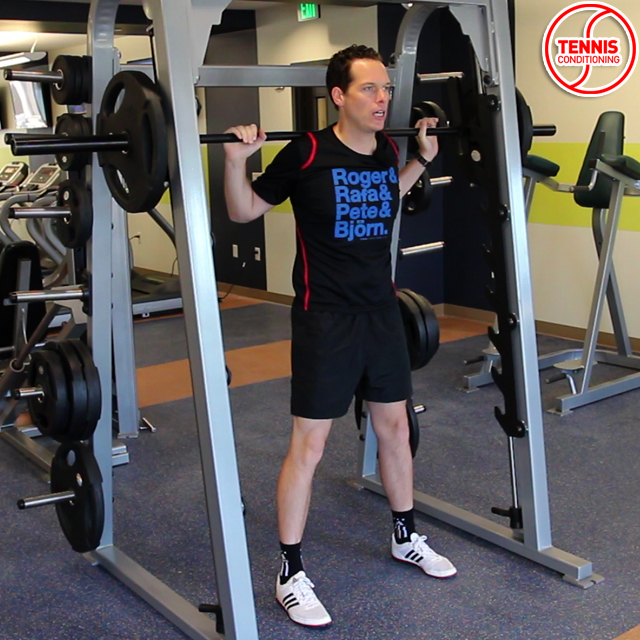The 1 Repetition Maximum is the maximum resistance an athlete can be lift once for free-weight exercises of up to 10 repetitions.
The maximum resistance that can be lifted only once is called the 1 repetition maximum (1RM). The 3% formula, ([0.03 x # of repetitions] + 1) x weight used (lb), accurately predicts the 1RM for free-weight lifts of up to 10 repetitions; it is not valid for machine-based exercises.
You can use the provided information and examples below to calculate your 1RM and exercise intensities.
- Perform a warm up
- Choose a compound lift (e.g. squat or bench press)
- Choose a bit more weight than can be lifted for 8 repetitions
- Have a partner/spotter
- Perform as many repetitions as possible *
- Record resistance and # of repetitions
- Use provided formula to calculate 1RM
* If number of repetitions > 10 then increase resistance, rest 3 minutes, and repeat
1 Repetition Maximum Formula
1RM = ([0.03 x # of repetitions] + 1) x weight used (lb)
The athlete performs a compound lift to predict the 1RM because a free-weight compound exercise, such as the front squat, identifies the stabilizer and prime mover relationship; athletes are only as strong as their weakest link.
For example, if an athlete bench presses 250 lbs using a smith machine (2 rods that only allow the bar to move upward or downward) then the 250 lbs will not translate into the bench pressing because the stabilizers will fatigue and the force needed to lift the resistance off the chest cannot be transferred effectively.

In other words, athletes often will not have the stabilizer strength, which is the disconnection between prime mover strength and energy transfer in force application.
So there might be an athlete that can do heavy squats or bench presses but they don’t perform as well on the court as the athlete that can do Power Cleans very well.
Therefore, total force production (how strong the athlete is) is less important with respect to performance than how well the athlete can manage their body weight.
1 Repetition Maximum Example

There is an athlete that can lift 175 lbs for 6 repetitions during the back squat. What is the athlete’s 1RM?
1RM = ([0.03 x # of repetitions] + 1) x weight used
= ([0.03 x 6] + 1) x 175 lbs
= 1.18 x 175 lbs
= 206.5 lbs
The athlete would be using 205 lbs for the 1RM because there is no 206.5 lbs in weight lifting (how are you going to put 161.5 lbs on the bar?).
Calculate Exercise Intensities
Once the predicted 1RM has been established, one can calculate exercise intensities. If one wants to perform a squat with 70% of 1RM simply multiply the 1RM by 0.7 to get the proper intensity.
With respect to the previous example, the athlete’s 1RM is 206.5lb for the Back Squat. Therefore, multiply 206.5lb by 0.7 to calculate exercise intensity at 70% of 1RM.
70% of 1RM = 206.5lb x 0.7
= 144.55 lb
Therefore, use 145lb since you cannot put 144.55 lb on the bar.

